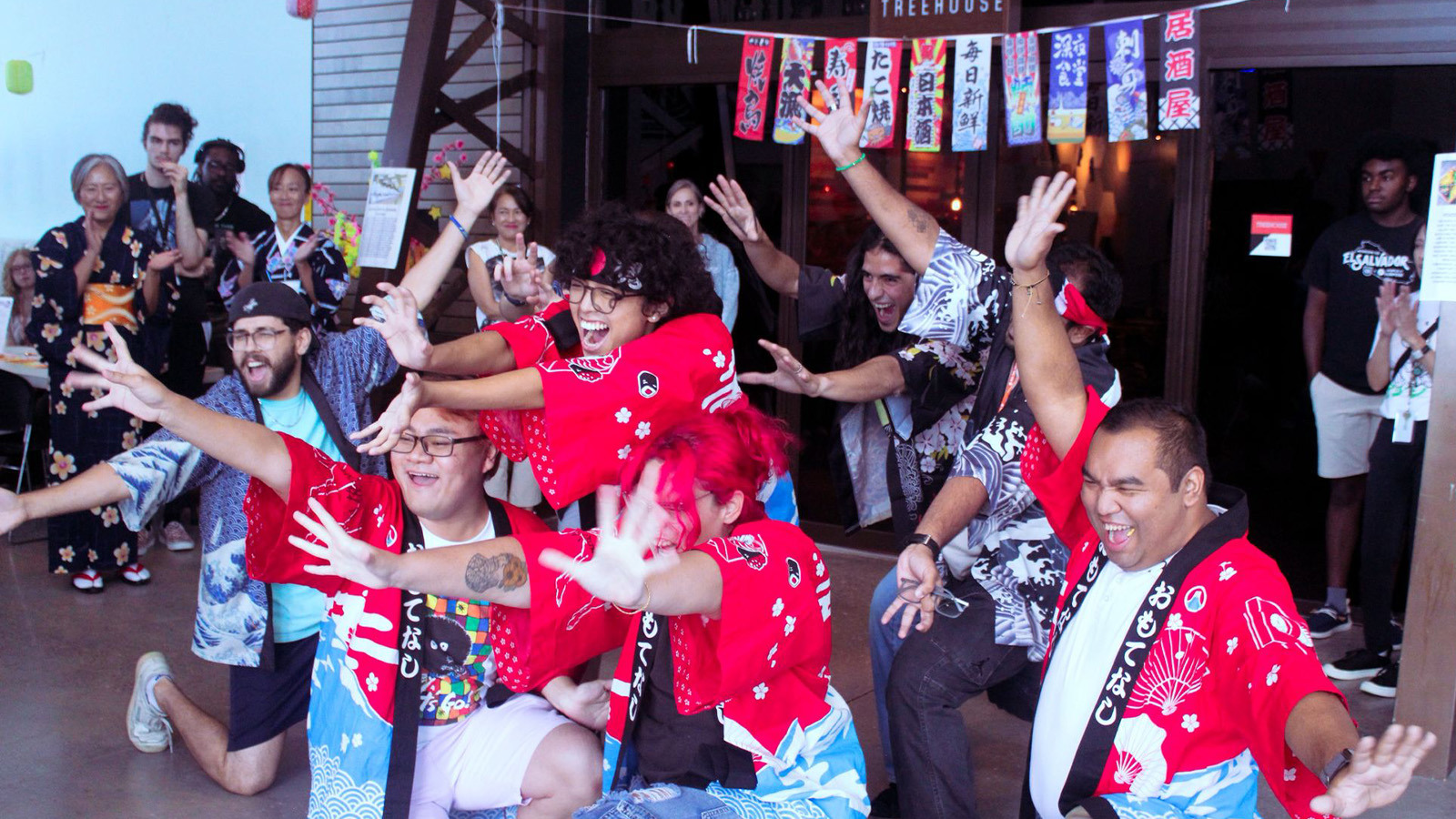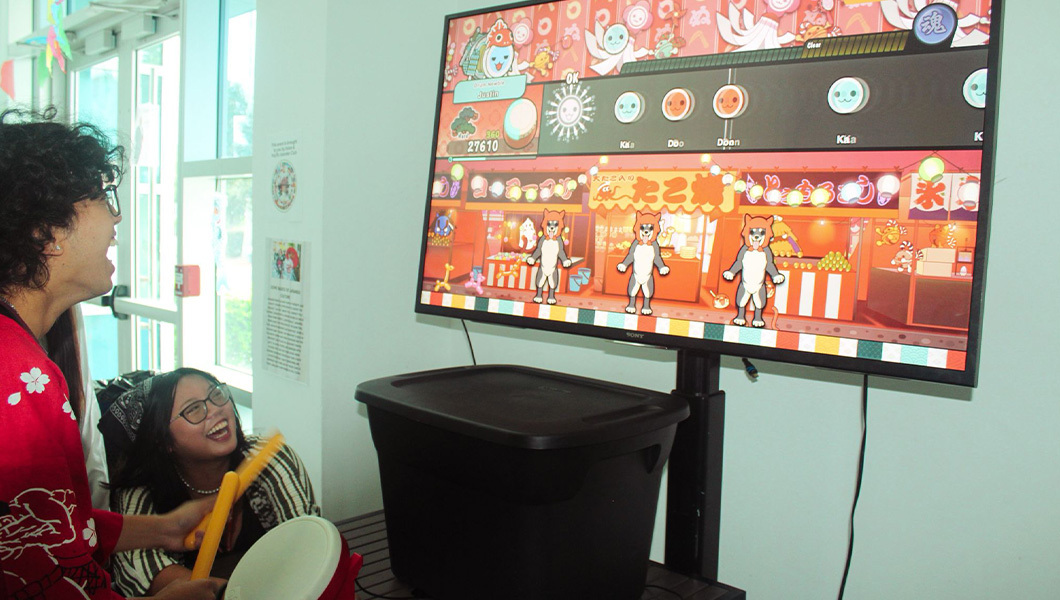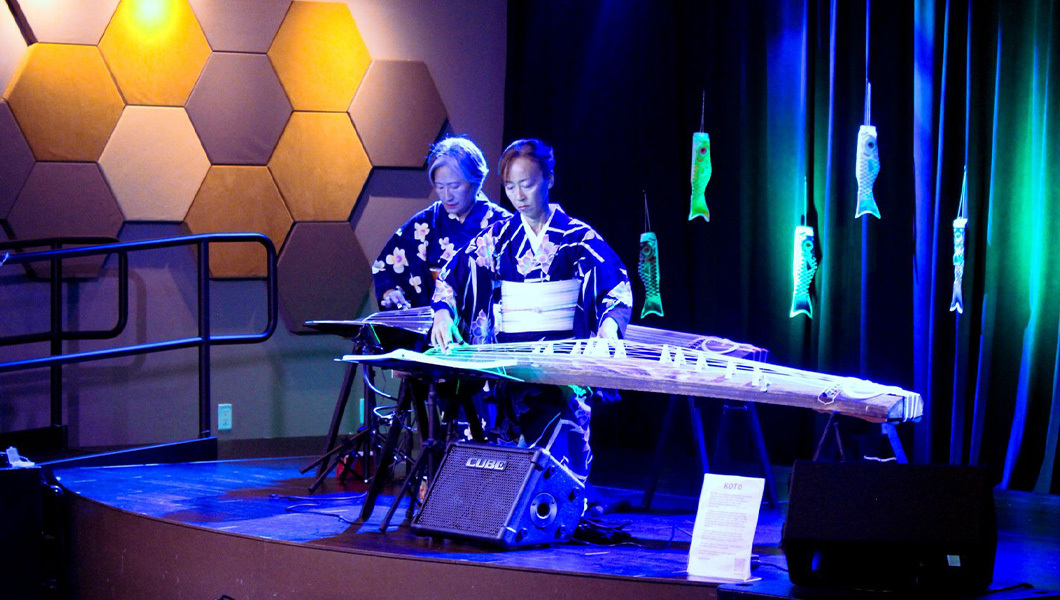Full Sail Stories
Published Sep 15, 2025
Japanese Summer Festival, ‘Natsu Matsuri,’ Held on Campus
The International Student Society (ISS) hosted the event featuring food, games, origami, and traditional Japanese dances and music.

On August 22, Full Sail University’s International Student Society hosted a “Natsu Matsuri” – a Japanese summer festival. Held at Full Sail’s student-run live performance venue, the Treehouse, the event featured food, games, origami making, and traditional dances and music led by the Japan Association of Orlando.
With the Treehouse lobby decked out in vibrant Japanese flags and banners, tables were littered with coloring pages and origami making supplies as students gathered to color and fold bright squares of paper into cranes and frogs. On the other side of the lobby, students could take turns facing off in various Japanese video games and tabletop games.

Partway through the evening, members of the Japan Association of Orlando dressed in traditional Japanese clothing taught students a dance. With music playing, students and instructors danced the night away in honor of Japanese pride.
The same instructors, also known as Friends of Koto, played a Japanese instrument called the koto, traditionally played in imperial courts in the 8th century. While enjoying the music, students could grab a bite to eat – a local restaurant, Omusubee, kindly provided onigiri for the event.

“The event was designed to celebrate the end of the summer by showcasing many activities done during a Japanese summer festival and providing cultural information about them,” said Justine Francisco, Full Sail’s International Student Coordinator. “My hope is that students had a fun experience and learned more about the Japanese culture.”



